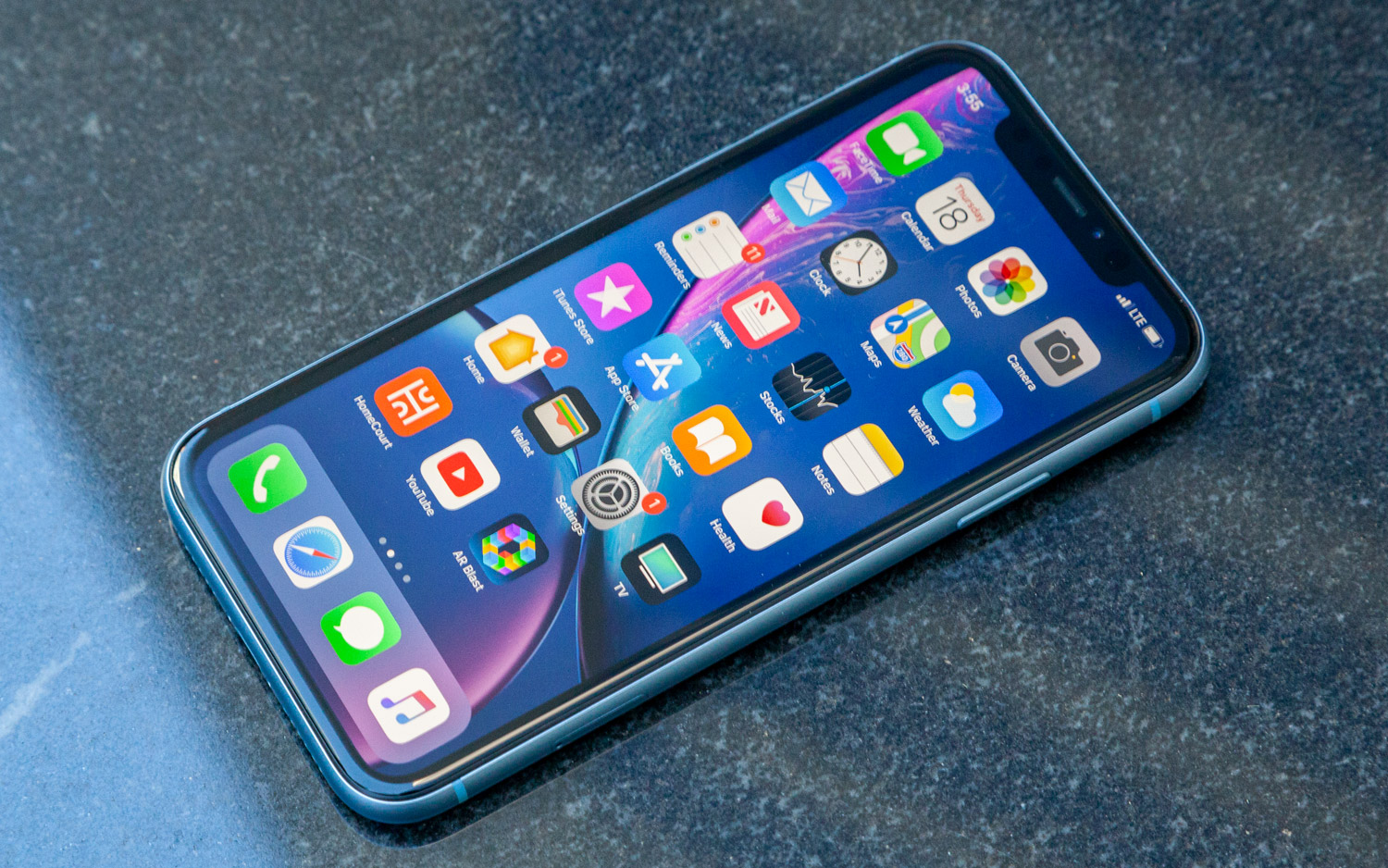Tom's Guide Verdict
The iPhone XR delivers fast performance, great cameras and longer battery life than other flagship phones, all in a colorful and affordable package.
Pros
- +
Fast performance
- +
Very long battery life
- +
Big and colorful LCD
- +
Great flagship value
Cons
- -
No optical zoom
- -
Portrait mode works only with people
Why you can trust Tom's Guide
Update: The iPhone XR has officially been discontinued by Apple and is available through certain carriers like Straight Talk for just $299. Overall, though, we now recommend the iPhone 11, which is a very good alternative at $499. Take a look at our Apple Store coupons page to find some great offers from Apple.
The iPhone XR remains a good buy if you're looking for an iPhone under $500. You get a roomy 6.1-inch display, swift performance from Apple's A12 Bionic processor and good camera quality in a colorful design. Most important, the price is a very reasonable $499.
There are some features you don't get here with the iPhone XR, such as a Night mode for the camera, 5G or an OLED display. If you can handle a smaller phone, the 4.7-inch iPhone SE is even cheaper while offering a faster processor. But based on my iPhone XR review, Apple's big-screen phone is worth buying for those on a budget.
- iPhone SE vs iPhone XR: Which iPhone is better for you?
- See all the best big phones
- iPhone 11 vs. iPhone XR: what difference has a year made?
Some may want to wait for the iPhone 13 to see what Apple has to offer this fall, but those phones will likely have a much more premium price. The iPhone XR gives you pretty much everything you could want in an affordable phone with minimal trade-offs.
iPhone XR review cheat sheet: What you need to know
- With a price drop to $499, the iPhone XR is one of the better smart phone values.
- The 6.1-inch LCD is big, bright and colorful, though OLED screens offer better blacks and wider viewing angles.
- The single rear camera offers excellent performance and impressive portraits, but the newer iPhones offers better low-light performance.
- Apple's A12 Bionic chip delivers fast performance that will satisfy most people.
- The iPhone XR offers nearly 11.5 hours of battery life, which is among the longest lasting phones.
iPhone XR tech specs
| Price | $599/£629 |
| OS | iOS 13 |
| CPU | A12 Bionic |
| RAM | 3GB |
| Storage | 64GB, 128GB, 256GB |
| Display | 6.1-inch LCD (1792 x 828) |
| Rear Camera | 12-MP (f/1.8) |
| Front Camera | 7-MP (f/2.2) |
| Colors | White, Black, Red, Coral, Blue, Yellow |
| Battery Life | 11 hours 26 minutes |
| Size | 5.9 x 3.0 x 0.3 inches |
| Weight | 6.8 ounces |
iPhone XR price and release date
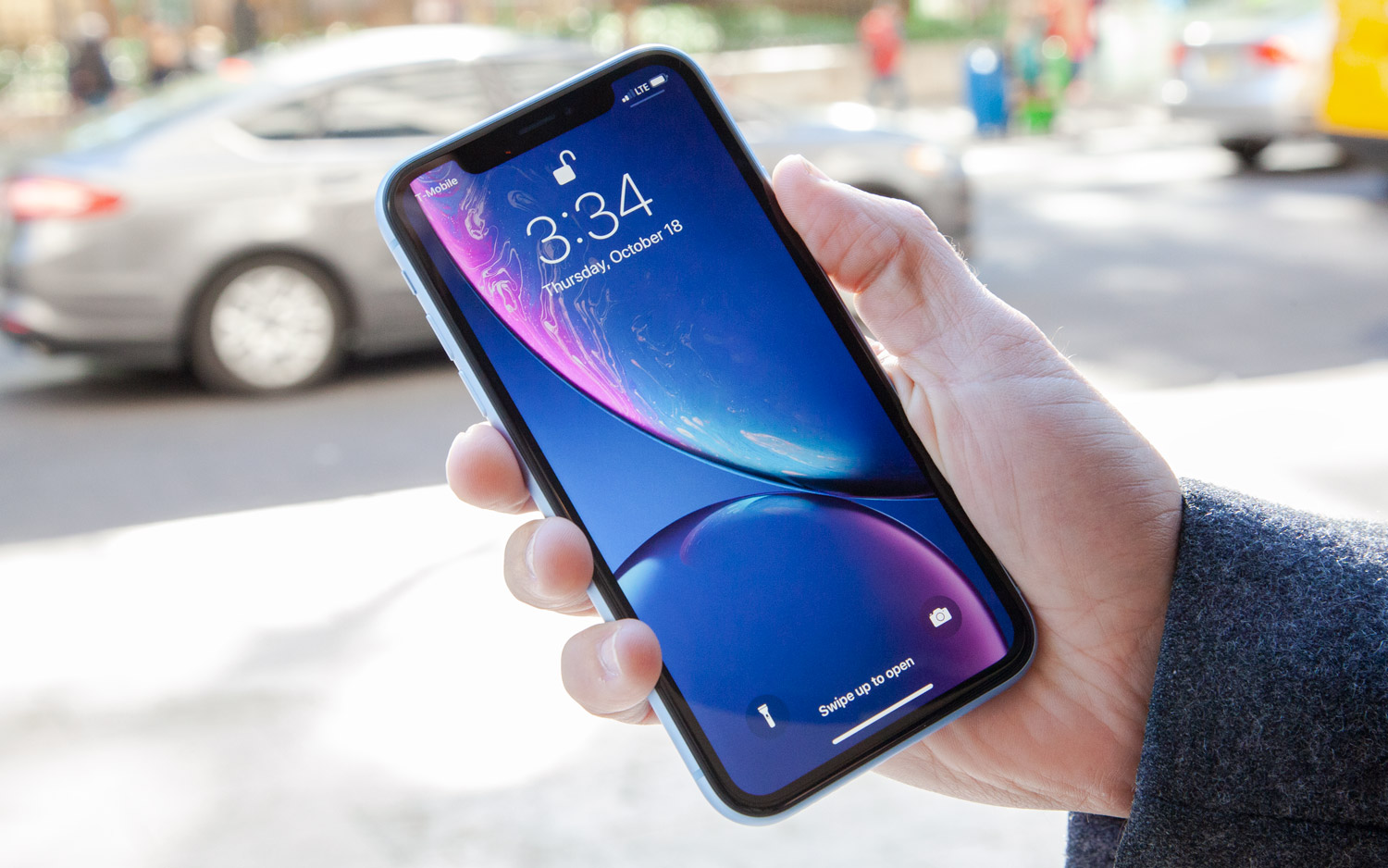
The iPhone XR went on sale Oct. 26, 2018. It now starts at $499 for 64GB of storage, and it's available through Apple and all of the major U.S. carriers, including AT&T, Sprint, T-Mobile and Verizon. You can also buy the iPhone XR through US Cellular and Xfinity, as well as through retailers such as Best Buy and Sam's Club.
iPhone XR review: Design
If you think most iPhones look too conservative, the iPhone XR will change your mind. Apple achieved a look that's fun yet elegant via a seven-layer color process.
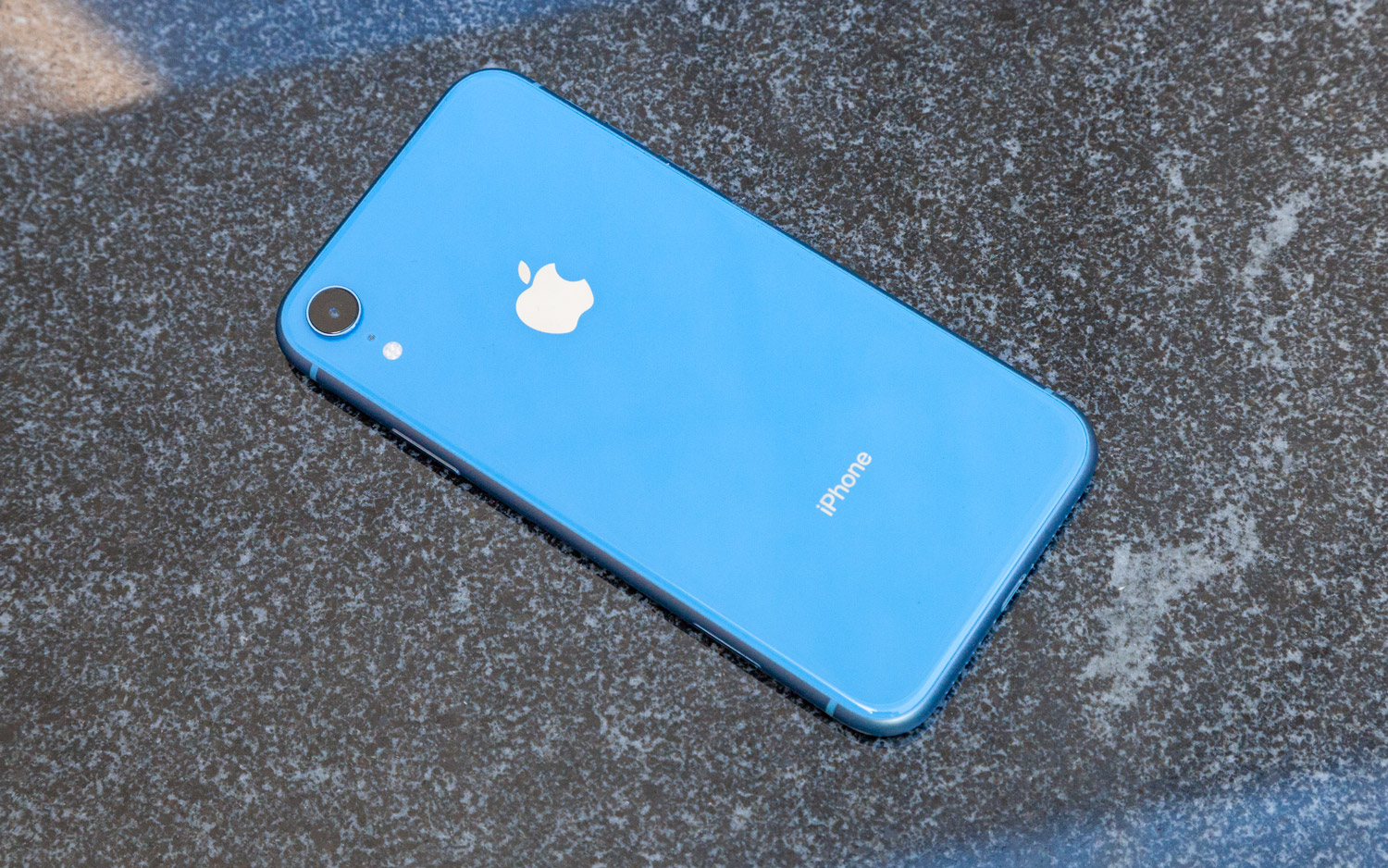
The glass backs are available in black, white, blue, yellow, coral and red. I'm partial to the cerulean blue. All of these hues have color-matched aluminum bands, which blend together with the back seamlessly. I've also been spending some time with the yellow and coral models. The yellow isn't as bright as the photos would have you believe; it's more of a lemony yellow.
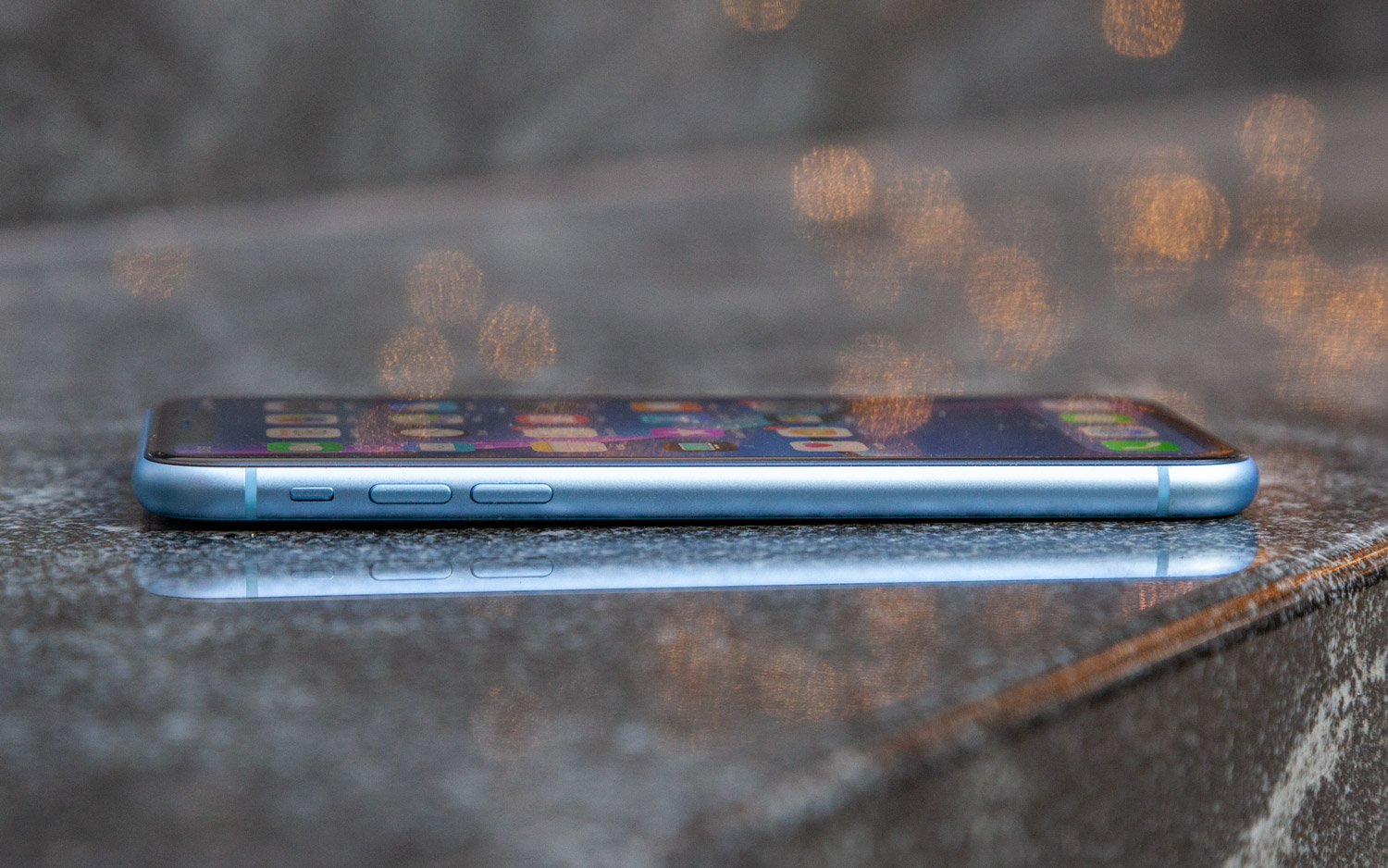
Again, as a phone snob, I can't help but notice that the bezels are slightly thicker on the iPhone XR than on the iPhone XS, but typical users won't care. The TrueDepth camera is up front, along with the notch, to help you log in via Face ID, as well as have fun with Animoji and Memoji and capture portrait selfies.
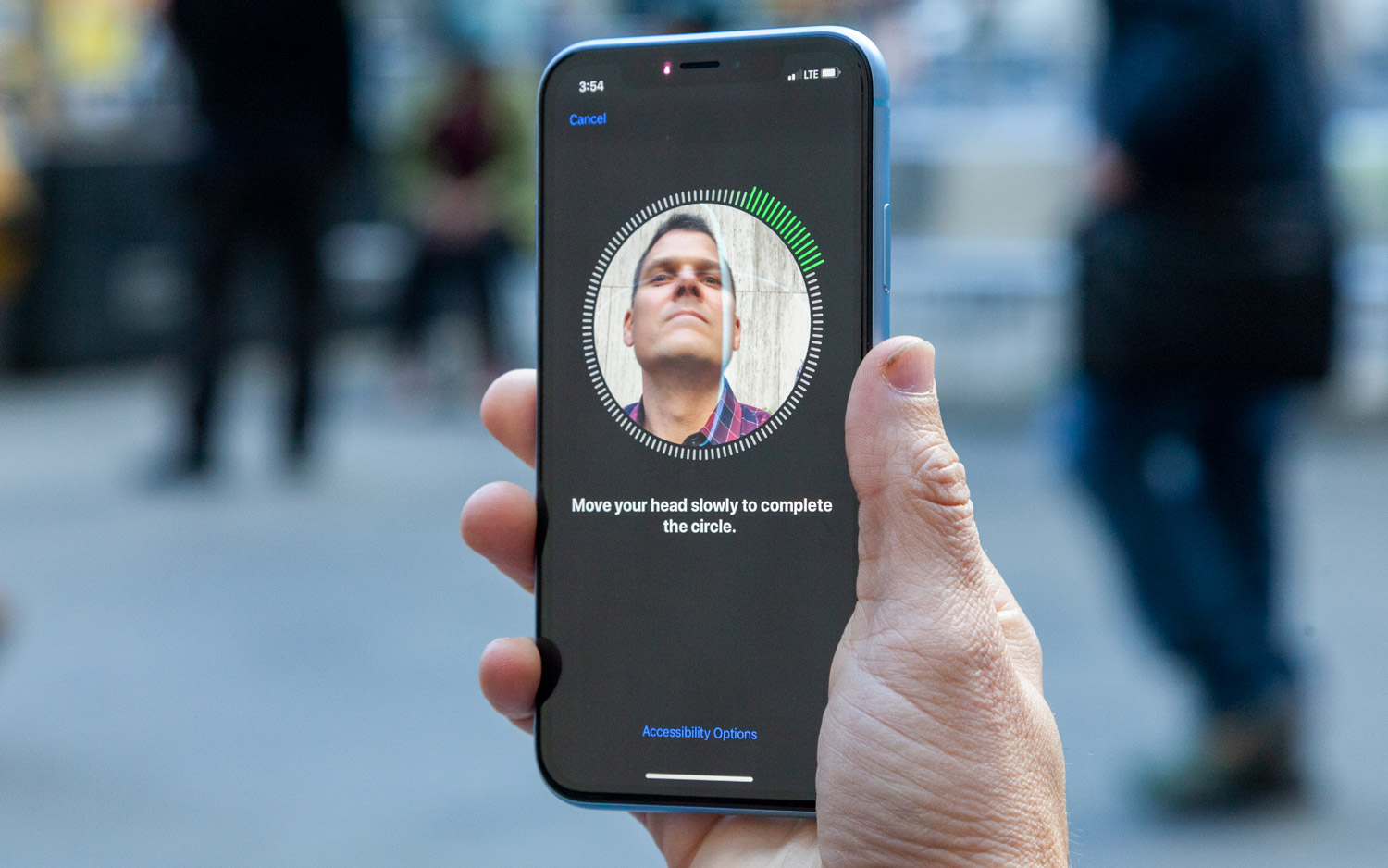
If you'll allow me to geek out for a moment, OLED screens are much easier to manipulate than LCDs, so it's a pretty impressive feat that Apple was able to deliver a near full-screen design on the LCD-based iPhone XR that curves toward the edges.
Apple pulled this off through a combination of precision milling, advanced pixel masking and subpixel anti-aliasing. That means that the very edges of the screen that look like bezels are actually part of the display and are made to look black.
iPhone XR review: Durability
In terms of ruggedness, the front of the iPhone XR has the same durable glass as the iPhone XS, but the back is not as tough, so you may want to get an iPhone XR case. The iPhone XR is IP67 water-resistant, which means it can withstand 1 meter of water for 30 minutes, compared to 2 meters for the same amount of time for the IP68-rated iPhone XS.
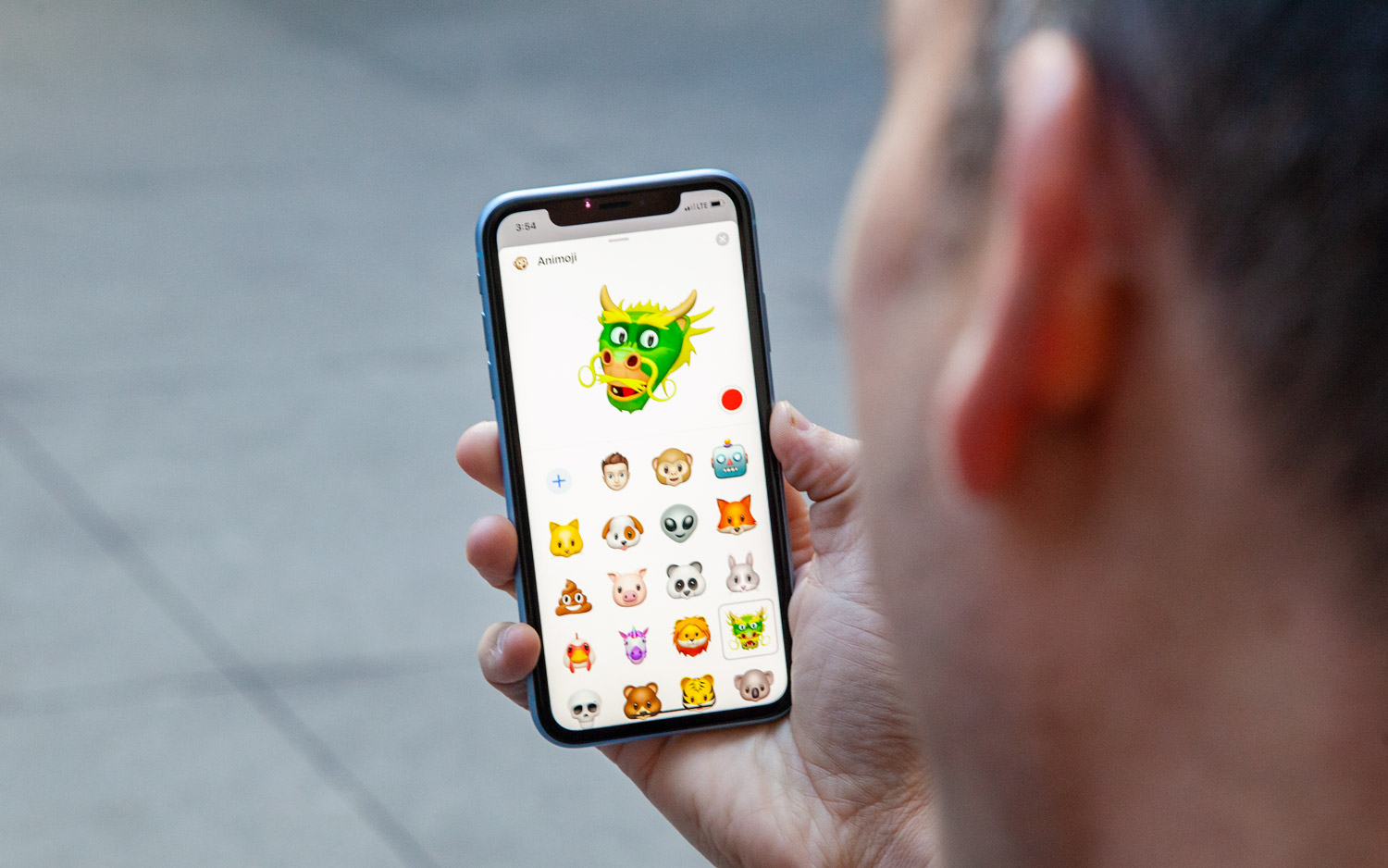
If you need to repair a cracked screen on the iPhone XR, it costs $199/£196.44 if you don't have AppleCare+. It costs $29/£25 if you do pay for AppleCare+ service, which for the iPhone XR is $149/£149.
iPhone XR review: Size
I've been switching between the 5.8-inch iPhone XS and the 6.5-inch iPhone XS Max over the last month, so the 6.1-inch iPhone XR feels just right to me. It's big enough to deliver the immersive experience smartphone buyers want these days for Netflix bingeing, Instagramming and gaming, but it's not so big that it's unwieldy.
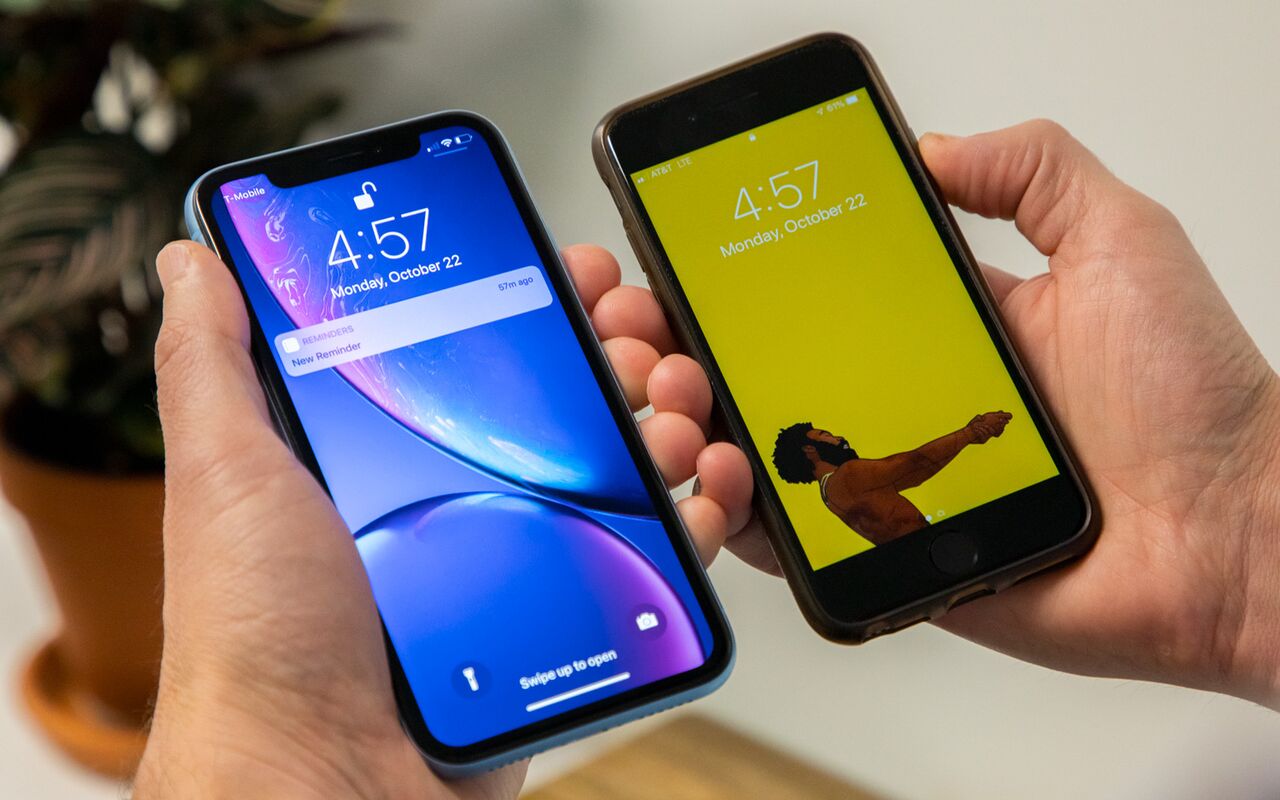
The design will take some adjustment for those stepping up from a puny, 4.7-inch iPhone 7 but not those stepping up from an iPhone 7 Plus. That's because Apple squeezed a bigger display into a design about the same size as the iPhone 7 Plus by banishing the Home button.
As you might expect, the iPhone XR's size and weight (6.8 ounces, 5.9 x 3 x 0.3 inches) is in between that of the iPhone XS (6.2 ounces, 5.7 x 2.8 x 0.3 inches) and that of the XS Max (7.3 ounces, 6.2 x 3.1 x 0.3 inches). Google's Pixel 3 XL (6.5 ounces, 6.2 x 3 x 0.3 inches), with its 6.3-inch screen, is a bit lighter but noticeably taller than the iPhone XR.
It's worth noting that the Galaxy S10e delivers a colorful design in a more compact package, as it sports a smaller 5.8-inch display.
iPhone XR review: Display
The iPhone XR's 6.1-inch Liquid Retina LCD is one of the brighter and more colorful smartphone displays out there. It's just not OLED-great. On the plus side, the 1792 x 828-pixel screen delivered excellent detail when I watched the trailer for Aquaman, as I could make out every scale in his superhero uniform. (Yes, even though this panel is not technically full HD.) And the laser beams being shot at Amber Heard were an intense blue.
This LCD fared well in our lab tests as well. It registered an excellent 589 nits of brightness, and I had no trouble reading this screen in direct sunlight. That number blows away the Pixel 3 XL's 362 nits. The iPhone XS (606 nits) and Galaxy Note 9 (604 nits) are even brighter, though. The Galaxy S10e hit 603 nits.
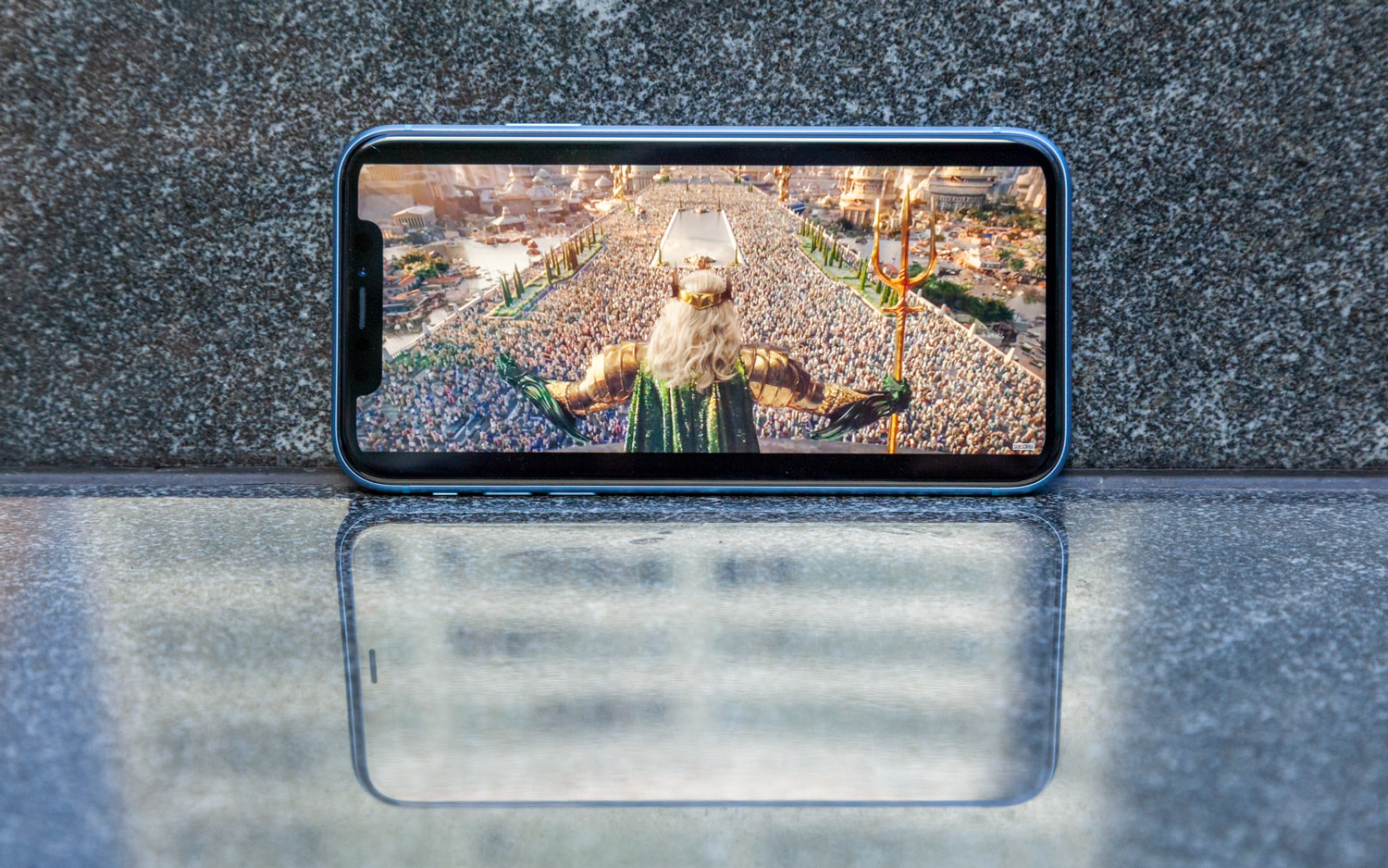
The iPhone XR's screen registered a good 123.4 percent of the sRGB color gamut, which is on par with the iPhone XS's result (123 percent) but is behind showings from the Pixel 3 XL (170.2 percent) and Galaxy Note 9 (224 percent). The Galaxy S10e registered 148 percent.
The color accuracy is great, too, as the iPhone XR turned in a Delta-E score of 0.28 (0 is perfect). That beats results from the Pixel 3 XL (0.35) and Note 9 (0.34) and is comparable to the iPhone XS' showing (0.25). The Galaxy S10e was behind at 0.57.
What you don't get on the iPhone XR's screen are the perfect blacks and ultrawide viewing angles that OLED displays offer. I noticed the difference when I put the iPhone XR and iPhone XS side by side with an aquarium screen saver. The OLED panel is just more vibrant, and blacks can look more gray on an LCD.
iPhone XR review: No 3D Touch an issue?
The iPhone XR's display doesn't offer 3D Touch capability like the iPhone XS and iPhone XS Max do, which means you can't long-press on apps on the home screen to reveal shortcuts. But the XR does support what's called Haptic Touch, which delivers haptic feedback and a lot of the same functionality.
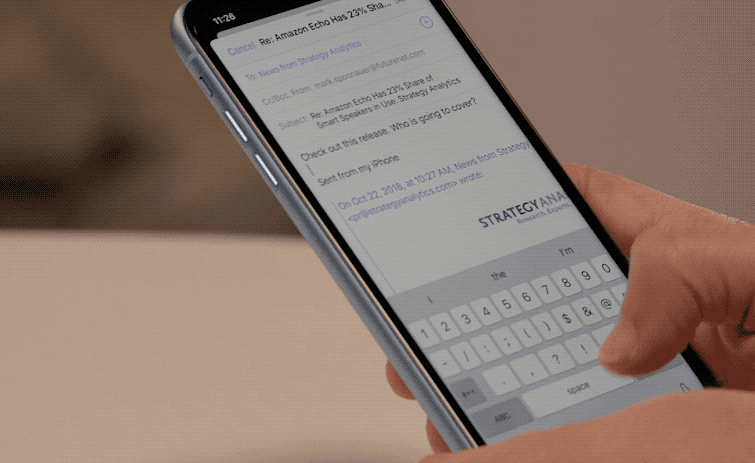
So, instead of deep-pressing to launch the camera from the lock screen, you long-press with a soft touch. And instead of pressing hard anywhere on the keyboard to control the cursor while you're typing, you just long-press gently on the space bar. This change took some getting used to for me after I'd been using 3D Touch-capable phones, but overall, I don't think most iPhone owners will notice the difference between Haptic Touch and 3D Touch.
iPhone XR review: Audio
With wider stereo sound, the iPhone XR's dual speakers delivered excellent audio quality when streaming Post Malone's "Better Now." The vocals and instruments were rich and full, so good that my family told me to keep it down. More importantly, there's a true volume boost over the iPhone X, which I appreciated when getting turn-by-turn directions via Google Maps while I was driving. I could even hear the directions over my car stereo played at moderate volume.
iPhone XR review: Cameras
If you're worried that the single-lens iPhone XR won't capture photos that are as good as those from the dual-lens iPhone XS and XS Max, you can stop worrying now. This phone has the same stellar wide-angle camera sensor as its pricier siblings and the same Smart HDR functionality, which delivers better highlights in the shadows.

You can even shoot Portrait mode shots with the rear lens, complete with artistic bokeh effect, but there's a catch: For now, the back camera can snap Portraits only of people, and if you try something else, the iPhone will tell you that it's waiting for a person to enter the frame. The Pixel 3 doesn't have that limitation.
The good news is that the iPhone XR's people portraits look pretty convincing. Plus, the iOS 12.1 update lets you tweak the depth control in your portraits in real-time preview as you shoot, not just after the fact.
Take this shot of my colleague Sherri. The street scene to her left is artfully blurred, and yet the edges of her jacket look crisp. The iPhone XR's camera delivered good results in uneven sunlight, though the left side of Sherri's face could be brighter. Just keep in mind that because the iPhone XR doesn't have a telephoto lens like the iPhone XS has, your results will look more zoomed out than they would on Apple's dual-camera phones.
How about food? The iPhone XR took a more appetizing shot of this dessert than the Pixel 3 did. The raspberry on top is much brighter on the iPhone's photo, and the chocolate topper is more in focus.
When shooting pink flowers, the iPhone XR's camera delivered less of a gradient in the color than the Galaxy Note 9 did, so I actually preferred the results from Samsung's phone.
The Pixel 3 outperformed the iPhone XR on this shot of a lion in bright sunlight. There's more contrast in the Pixel 3's shot, and the shadows don't get lost. There's also a bit of lens flare in the iPhone XR's photo.
Because the iPhone XR lacks the 2x optical zoom of the iPhone XS Max, I took this shot of the facade of the New York Public Library with the XR's digital zoom. As it turns out, the iPhone XR's image looks pretty sharp, though the text on the iPhone XS Max's photo is more defined and has better contrast when you zoom in further. Same thing goes for the stone figures to the left.
To test low-light performance we took the iPhone XR and Pixel 3 XL into our video studio and shut off all the lights, leaving just a bit of light coming in from the hallway. The iPhone XR captured a brighter shot, making the Cappy hat, Unicorn Meat tin and white water bottle more visible. The Pixel 3 XL’s image was dimmer with more noise.
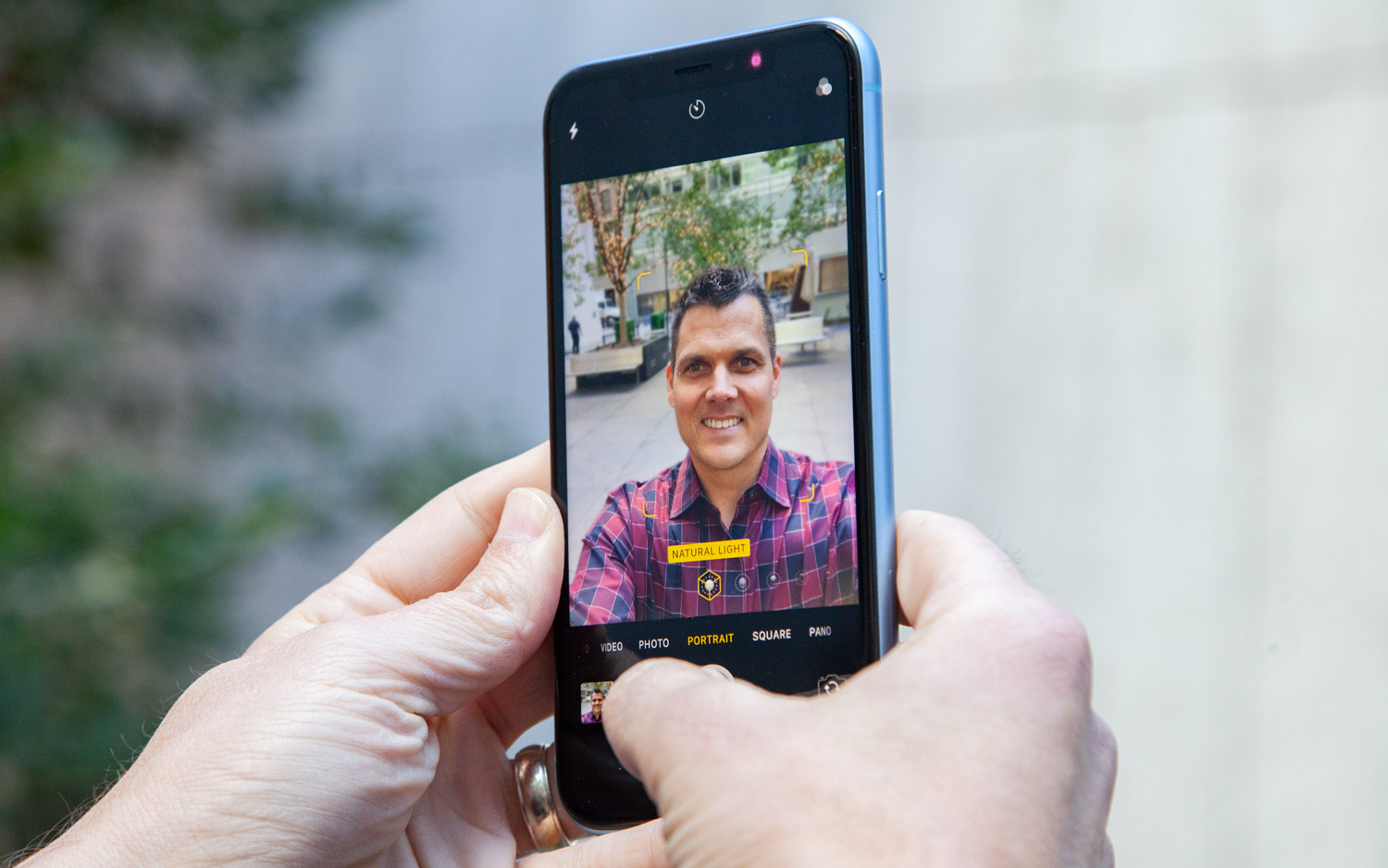
The 7-MP front camera did an excellent job taking selfies. There's good detail in my blue-and-red checkered shirt, as well as in my hair, and the lamp post and street in the background are artfully blurred. Just as with the iPhone XS, you can tweak the depth effect and change lighting effects, although the Contour Light option made me look like I was wearing makeup.
MORE: Pixel 3 vs. iPhone XS Camera Face-Off: Why Google Wins
Apple is also issuing a bug fix in iOS 12. 1 that can result in selfies with a so-called skin smoothing effect. According to The Verge, this was because the iPhone XR's and iPhone XS' Smart HDR feature was selecting the wrong base frame for the shot.
iPhone XR review: Performance
No surprise here: The A12 Bionic processor in the iPhone XR is just as fast as those in the iPhone XS and XS Max, which means you're getting a phone that beats the best Android flagships for hundreds of dollars less. I enjoyed silky-smooth performance when playing the augmented reality puzzle game AR Blast, which has you shoot colored blocks in front of you. Plus, other people can join in on the AR action for multiplayer fun, something you can't do on Android (at least not yet).
On Geekbench 4, which measures overall performance, the iPhone XR scored 11,312, which is comparable to the scores from the iPhone XS Max (11,515) and iPhone XS (11,420). That beats scores from the Galaxy Note 9 (8,876) and OnePlus 6 (9,088) and blows past the Pixel 3 XL's result (7,684).
The Galaxy S10e, which has a fast Snapdragon 855 processor, scored 10,513 on Geekbench 4.
The iPhone XR also excelled in our video-editing test, taking just 40 seconds to convert a 4K clip to 1080p. That's only a second behind the iPhone XS and way faster than the Pixel 3 XL (2:42), Galaxy S9+ (2:32) and OnePlus 6 (3:45). The Galaxy S10e finished in 2:26.

On 3DMark's Slingshot Extreme Unlimited test, which evaluates graphics performance, the iPhone XR notched 4,416. The Pixel 3 XL was just a bit behind, at 4,396, but the Galaxy Note 9 reached a higher 4,639.
The iPhone XR pulled ahead in everyday tasks like opening apps, too. For example, it took the phone 12.3 seconds to open the Tekken fighting game, compared to 21 seconds for the PIxel 3 XL. The gap was a lot narrower on the Asphalt 9 racing game, with the iPhone taking 4.98 seconds to the Pixel 3 XL's 6.4 seconds.
While the iPhone XR doesn't support the fastest Gigabit LTE network standard that the iPhone XS and XS Max do, it delivered excellent data rates in our testing. On the Speedtet.net app, the iPhone XR averaged 58.4-Mbps downloads, compared to 58.2-Mbps down for the iPhone XS. However, the iPhone XS offered about double the upload speeds, at 25.4 Mbps versus 12.87 Mbps for the XR.
iPhone XR battery life
One of the best reasons to choose the iPhone XR over the iPhone XS Max and XS is longer battery life.
On the Tom's Guide Battery Test, which involves continuous web surfing at 150 nits of screen brightness, the iPhone XR lasted 11 hours and 26 minutes. That beats the times from the iPhone XS Max (10:38) and iPhone XS (9:41) by a significant margin.
The Pixel 3 XL lasted only 9:30, while the Galaxy Note 9 also endured for 11:26. The Galaxy S10e endured for 9:41.
In everyday use the iPhone XR's endurance also impressed. After unplugging at 100 percent at 7 a.m., I used the phone intermittently to play games, check Facebook and email, and stream Spotify and capture photos and videos, and I still have 24 percent battery left at 9 p.m.
Unfortunately, Apple once again doesn’t offer fast USB-C charging on this phone. You’ll have to pay about $50/£50 for a USB-C charger and USB-C to Lightning adapter if you want to get to 50 percent in 30 minutes. The iPhone XR does support wireless charging.
iPhone XR review: iOS 14
The iPhone XR runs iOS 14. The top features of iOS 14 include widgets on the home screen to give you more info at a glance, as well as App Library for automatically organizing your apps. Other enhancements include compact incoming call notifications (so they don't take over your whole screen, picture in picture, pinned conversations in Messages, a Translate app and more.
iPhone XR vs iPhone 11
The iPhone XR remains a good value, but there are reasons to consider stepping up to the iPhone 11. The iPhone 11 has a more durable design with tougher glass and a faster A13 Bionic processor, but the biggest reason to opt for the iPhone 11 over the iPhone XR is its new camera system.
The iPhone 11's camera takes much better pictures in low light and has a sophisticated Night Mode that takes stellar shots. On the other hand, the iPhone 11 starts at $599, so if you want to keep the price low on your next phone the $499 iPhone XR is still a good buy.
For more info see our iPhone XR vs iPhone 11 face-off.
iPhone XR vs iPhone SE 2020
Our iPhone SE vs iPhone XR face-off has more details, but here's the gist if you're on the fence between these two phones. The cheaper $399 iPhone SE is faster, thanks to its A13 Bionic processor, and that same chip enables several photography features, including Portrait mode for the rear and front cameras and Smart HDR. The iPhone XR makes due with an older A12 Bionic chip.
On the other hand, the iPhone XR has a larger display than the iPhone SE (6.1 inches vs 4.7 inches), longer battery life and Face ID. The iPhone SE uses a Touch ID sensor.
iPhone XR review: Verdict
The iPhone XR has shockingly few trade-offs compared to pricier iPhones. You get a big and bright display, very good cameras, fast performance and long battery life for a very affordable price. Overall, we prefer the newer iPhone 12 because of its better cameras, OLED display and 5G, but if you're on a budget you should be very happy with the iPhone XR.
A tougher choice is between the $499 iPhone XR and even cheaper $399 iPhone SE 2020. The iPhone XR offers a larger screen and Face ID, but the new iPhone SE has a faster A13 Bionic chip and better cameras in a more compact design. See our iPhone XR vs iPhone SE face-off for more info.
Some may want to wait to see if Apple launches a new iPhone SE 3, but that's apparently not being launched this year. And while the iPhone 13 is on the way this fall, we expect prices to continue to start at $799. Overall, the iPhone XR is one of the best iPhones out there if you don't want to pay a flagship premium.
Credit: Tom's Guide
Mark Spoonauer is the global editor in chief of Tom's Guide and has covered technology for over 20 years. In addition to overseeing the direction of Tom's Guide, Mark specializes in covering all things mobile, having reviewed dozens of smartphones and other gadgets. He has spoken at key industry events and appears regularly on TV to discuss the latest trends, including Cheddar, Fox Business and other outlets. Mark was previously editor in chief of Laptop Mag, and his work has appeared in Wired, Popular Science and Inc. Follow him on Twitter at @mspoonauer.
-
Mark Spoonauer Reply
Thanks @dgw222. Let us know how you like it!21425122 said:Great review! Mine (in blue) comes Friday! -
sheltem Since the XR only has a 2x2 antenna design, have you noticed any differences in reception between the XS and XR?Reply -
Mark Spoonauer Reply21426402 said:Since the XR only has a 2x2 antenna design, have you noticed any differences in reception between the XS and XR?
-
Mark Spoonauer Reply
@sheltem Not in terms of LTE performance but open to feedback on other testing.21426402 said:Since the XR only has a 2x2 antenna design, have you noticed any differences in reception between the XS and XR?
-
mepoquette Just made a comment and it didn't post. Very disappointing.Reply
It was in response to the comment about the 2x2 antenna design being a negative factor. As Tom and others know by now PC Mag.com just recently wrote a VERY critical article about this antenna situation and concluded that it was a black mark against the XR. The author Sascha Segan all but pounded a stake through the heart of the XR. I am hoping that someone will address this serious criticism and debunk it, if possible. I just bought a new XR ONE week ago and this will be in the back of my mind now.
This reviews is really amazing and so thorough. My compliments to Mark for his detail. Perhaps in the near future he will read Sascha's damning article and offer some rebuttal. -
nealf2007 Reply21426402 said:Since the XR only has a 2x2 antenna design, have you noticed any differences in reception between the XS and XR?
My XR reception in low-signal rural areas has been as good as any phone I have ever experienced. That said, I have no doubt the XS would have faster download speeds in high signal areas. But the download speed of the XR in a strong signal areas is more than fast enough for my needs. I have trouble envisioning a scenario where 100+ Mbps isn't fast enough. -
nealf2007 Reply21485502 said:Just made a comment and it didn't post. Very disappointing.
It was in response to the comment about the 2x2 antenna design being a negative factor. As Tom and others know by now PC Mag.com just recently wrote a VERY critical article about this antenna situation and concluded that it was a black mark against the XR. The author Sascha Segan all but pounded a stake through the heart of the XR. I am hoping that someone will address this serious criticism and debunk it, if possible. I just bought a new XR ONE week ago and this will be in the back of my mind now.
This reviews is really amazing and so thorough. My compliments to Mark for his detail. Perhaps in the near future he will read Sascha's damning article and offer some rebuttal.
The PC Mag review only tested the high frequency band 4. In low-signal areas a phone is much more likely to use a low frequency bands such as 12,13,14,17 or 71. FCC testing shows the XR antenna has superior performance versus the XS. See www.wiwavelength.com.
So, XS throughput king, XR rules reception in low-signal areas.
-
mepoquette I haven't had enough opportunities to do a series of speed tests yet, Certainly, at home on WiFi I get excellent results using Speedtest.net app for iPhone. I am on Spectrum internet with the 100 Mbps plan. I get about 118 Mbps Down CONSISTENTLY and over 12 Upload which is higher than ever. I will have to do more testing in various areas to see how it compares.Reply
